Section 20
Pronunciation
20.1 Fundamentals
20.2 Pronunciation Basics
20.3 Simple Pronunciation
20.4 Diacritic Pronunciation
20.5 Instructional Content
20.6 Reference Sections with Syllabification and/or Pronunciations
20.7 Pronunciation and Summary Keys
20.8 Samples
Simple Pronunciation: Uses font attributes and capitalization to indicate pronunciation and syllable stress.
Diacritics: A pronunciation system is considered to be diacritic when it contains letters of the Latin alphabet and any of the diacritic marks or special letters. Syllable stress usually is shown with stress marks.
See Formats, §21, Alphabetic References, for additional information when pronunciation is used.a. Contractions may be used in a word when the pronunciation of the word is featured.
b. Use modified letter indicators to represent print diacritic marks. (See UEB, §4, Letters and Their Modifiers.)
c. Divide syllabified words that do not fit on one braille line at a syllable break.
Example 20-1: Syllable Division

_*ah_4vant-,,g>d_*
moh⠀,,teef
a. When text uses full capitalization to show primary syllable stress, place the capital letter or word indicator before the affected syllable.
Example 20-2: Primary Stress Indicated with Double Capitals
"<ad-ap-,,tay-%un">
b. Follow print when a font attribute (e.g., italics, boldface, etc.) is used to show stress.
Example 20-3: Primary Stress Indicated with Italics
_\ad ap .1tay %un_\
c. Follow print when syllabification is not indicated.
Example 20-4: Stress without Syllabification

adap_1tay_'%un
Example 20-5: Primary and Secondary Stress
@<.1ay.'-bi-,,ah-tik@>
a. Use modified letter indicators for print markings used to indicate diacritic pronunciation.
b. Use a transcriber-defined modifier for print markings that do not have a braille equivalent.
c. List modifiers representing diacritic symbols on the Special Symbols page.
d. Do not use contractions when a modifier applies to one of the letters within a contraction.
Example 20-6: Hyphenated Compound Word

"<9-l@-ine sk@-at 9g">
Example 20-7: Partial Pronunciation

"<^3ak tiv1 -t@-av">
a. Follow print for placement of stress marks. A transcriber's note may be added to the Transcriber's Note page if placement of the stress mark might make it difficult to tell which syllable is stressed.
b. If stress marks are not included in a pronunciation key, include them on the Special Symbols page.
c. Stress marks do not replace the print symbol showing syllable breaks.
d. Use a transcriber-defined indicator for a tertiary stress mark. Note: A grade 1 indicator preceding the transcriber-defined indicator may be required.
Example 20-8: Primary and Secondary Stress

"<>^.b _5 mat^.2 ik">
Example 20-9: Primary, Secondary, and Tertiary Stress

⠀⠀⠀⠀⠀⠀@.<.=? repres5ts t]ti>y /ress@.>
_/p5^.b-man;?-%ip^.2_/
Example 20-10: High (Primary) and Low (Secondary) Stress

_*^.ba-pr_5-^.2k^3at_*
e. Occasionally a mark appearing over a vowel in words of more than one syllable indicates stress. Use the correct modifier to represent the print symbol(s).
Example 20-11: Stress over the First Vowel in the Syllable
a-back .<_5b^/ak.>
Example 20-12: Ignore Emphasis When Stress Mark Also Used
@<_5_4m@-az^.b@>
Example 20-13: Italics and Capitals with Diacritics
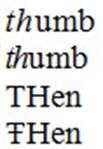
.1?.'umb
.1t^6h.'umb
,,?,'5
,,@3th,'5
Example 20-14: Diacritic Marking of Two Letters

f@-<oo>l
@*<th>]e
a. The modifier precedes the affected letter when only one of a pair of ligatured letters is marked.
Example 20-15: Diacritic Ligatured Letters

virt^6@-ue
b. The modifier precedes the first letter when both ligatured letters are marked with a single diacritic. Use grouping indicators to enclose the modified letters.
Example 20-16: Ligatured Letters with a Single Diacritic Mark

b@-<o^6o>k
a. The lowest mark is transcribed first if diacritic marks appear both above and below a letter, or both through and below a letter. Both marks are transcribed before the letter.
Example 20-17: Diacritic Marks above and below Letter
^&^/c
b. The mark nearest the letter is transcribed first when two or more diacritic marks appear above a letter.
Example 20-18: Two Diacritic Marks above Letter

f@-^%e>
Example 20-19: Freestanding Stress Marks within Text
⠀⠀,! prim>y /ress m>k is ^.b & !
second>y /ress m>k is ^.24
Example 20-20: Freestanding Macron in Text

,! @- %[s ! l;g v[el s.d4
A main entry word segment may be a word or phrase.
The definition segment includes the part of speech label, definition, descriptions, examples, etc.
a. Contract the first writing of entry words without showing syllable breaks, stress, or modifiers.
b. Insert the word a second time showing syllable breaks and stress if the entry word shows stress and/or syllable breaks.
c. When the main entry word is followed by punctuation, capitalization, or enclosure symbols, leave one blank cell between it (including respelling and pronunciations) and the definition segment.
d. When the main entry word segment is not followed by punctuation, capitalization, or enclosure symbols, leave two blank cells between it and the definition segment.
e. Two blank cells always separate a main entry phrase from the definition segment.
Example 20-21: Not Syllabified, No Pronunciation

a3us$⠀⠀adj4 blam$
Example 20-22: Not Syllabified, Pronunciation

a3us$⠀"<uh-,,kuzd">⠀adj4 blam$
Example 20-23: Syllabified/Stress, No Pronunciation

a3us$⠀ac-cus$^.b⠀⠀adj4 blam$
Example 20-24: Syllabified, Pronunciation

a3us$⠀ac-cus$⠀"<_5-ky@-uzd^.b">⠀adj4
⠀⠀blam$
Example 20-25: Stressed/Syllabified, No Pronunciation

h1dpiece⠀,,h1d-piece⠀,a helmet or cap
⠀⠀worn to protect ! h1d4
Example 20-26: Phrase not Syllabified, Pronunciation

,a*illes heel⠀"<_5-k@+il^.b@-ez h@-el">
⠀⠀,a p]son's w1k or vuln]able po9t4
20-14, and Sample 20-3: Pronunciation Key on Odd Pages on page 20-15.)
a. Insert pronunciation keys before the alphabetic reference material regardless of where they occur in print.
b. The pronunciation key is necessary in every volume in which pronunciations are used. If the pronunciation key is needed in any other volume than the one in which it occurs, place it in the preliminary pages. Note: Maintain the original placement if there are no pronunciations prior to the print location of the key.
c. Include the print page number of the transposed page that contains the repeated pronunciation key on the title page. For example:
Title page: Print pages 395, 45-a86
a. Follow print when categories are provided.
b. Do not assign headings when none are shown in print.
c. When pronunciation keys are shown in columns, list the entries using 1-3 margins, or 1-5, 3-5 for a nested list. Omit print column headings. Explain the change to print in a transcriber's note.
d. Precede symbols by the dot locator for "mention." Letters, groups of letters, or letters with modifiers do not require the dot locator and should be transcribed without contractions.
Example 20-27: Pronunciation Key in Columns with Headings
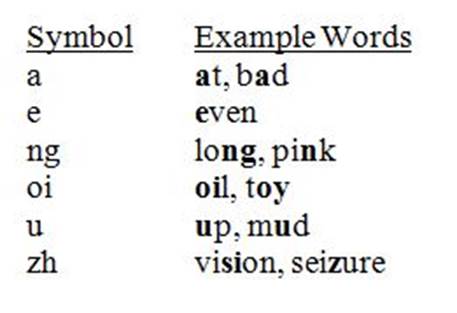
a ^2at1 b^2ad
;e ^2ev5
ng lo^1ng1 pi^2nk
oi ^1oi^'l1 t^1oy
;u ^2up1 m^2ud
zh vi^1si^'on1 sei^2zure
a. Begin each pronunciation key entry in cell 1.
b. Contract example words.
c. Follow print for use of emphasis.
Example 20-28: Example Words Without Emphasis
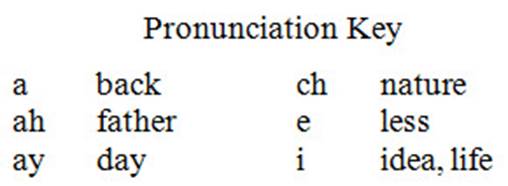
⠀⠀⠀⠀⠀⠀⠀⠀⠀⠀⠀,pronuncia;n ,key
⠀⠀⠀⠀⠀⠀⠀⠀⠀⠀⠀⠀⠀⠀⠀⠀⠀⠀⠀⠀⠀⠀⠀⠀⠀⠀⠀⠀⠀⠀⠀⠀⠀⠀⠀⠀⠀⠀⠀⠀
a back
ah "f
ay "d
ch nature
;e less
i idea1 life
Example 20-29: Schwa

.=_5 "7 a 9 abv
Example 20-30: Diacritic Symbols without Identification

.=@+
.=^3
.=@-
a. Omit the summary key when print includes a pronunciation key and a summary key.
b. Include the summary key when it is the only type of key.
c. Insert summary keys before the beginning of dictionaries or glossaries. Do not repeat them in following text.
d. Follow print paragraph or list format.
Example 20-31: Summary Key with Diacritics

^2add1 ^2@-ace1 c^2^%are1 p^2^3alm2
^25d1 ^2@-equal2 ^2x1 ^2@-ice2 ^2odd1
^2@-op51 ^2^%ord]2 ^2up1 b^2^%urn2 .=_5
"7 a 9 abv1 ;e 9 sick51 i 9 possible1 o
9 melon1 ;u 9 circus
Sample 20-2: Pronunciation and Paragraph Summary, page 20-14
Sample 20-3: Pronunciation Key on Odd Pages, page 20-15
Sample 20-4: Pronunciation Key without Heading, page 20-16
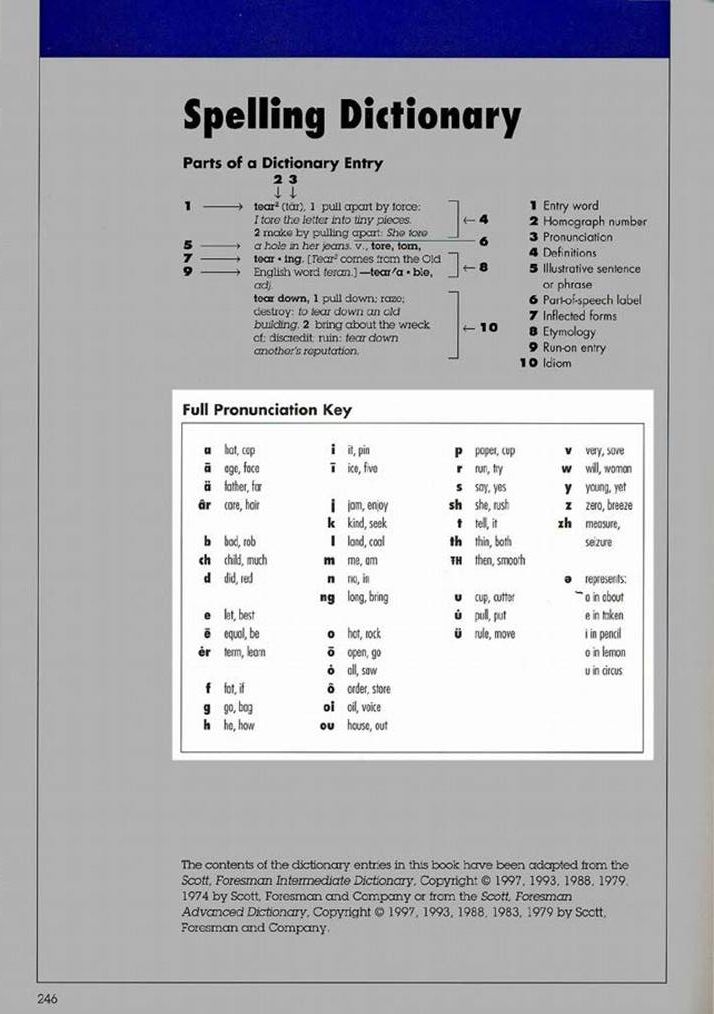
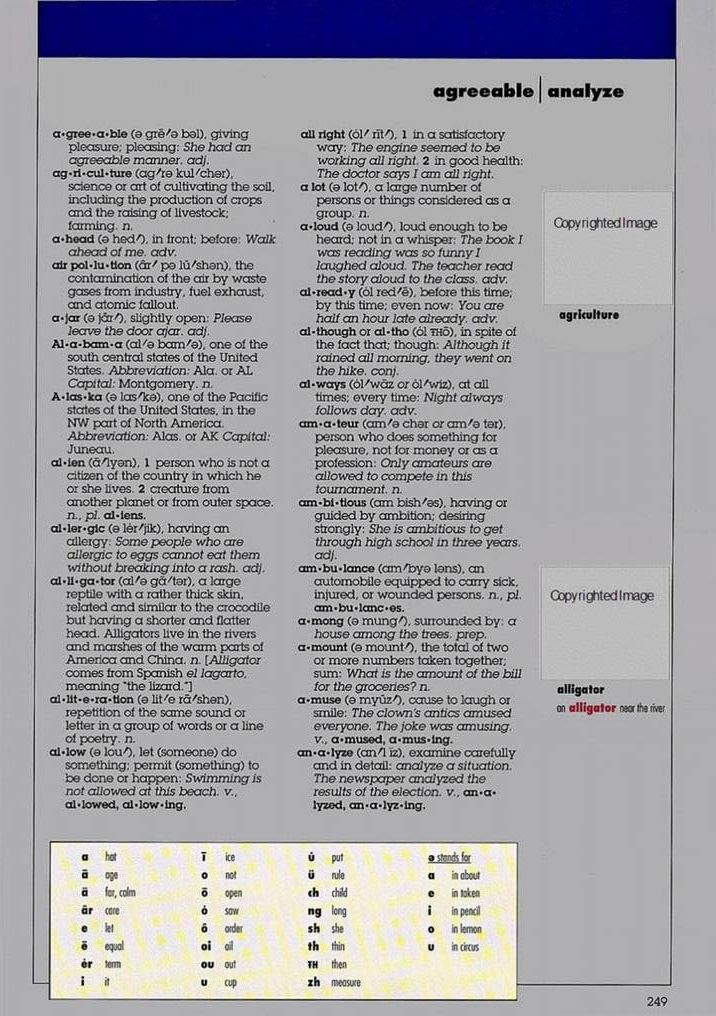
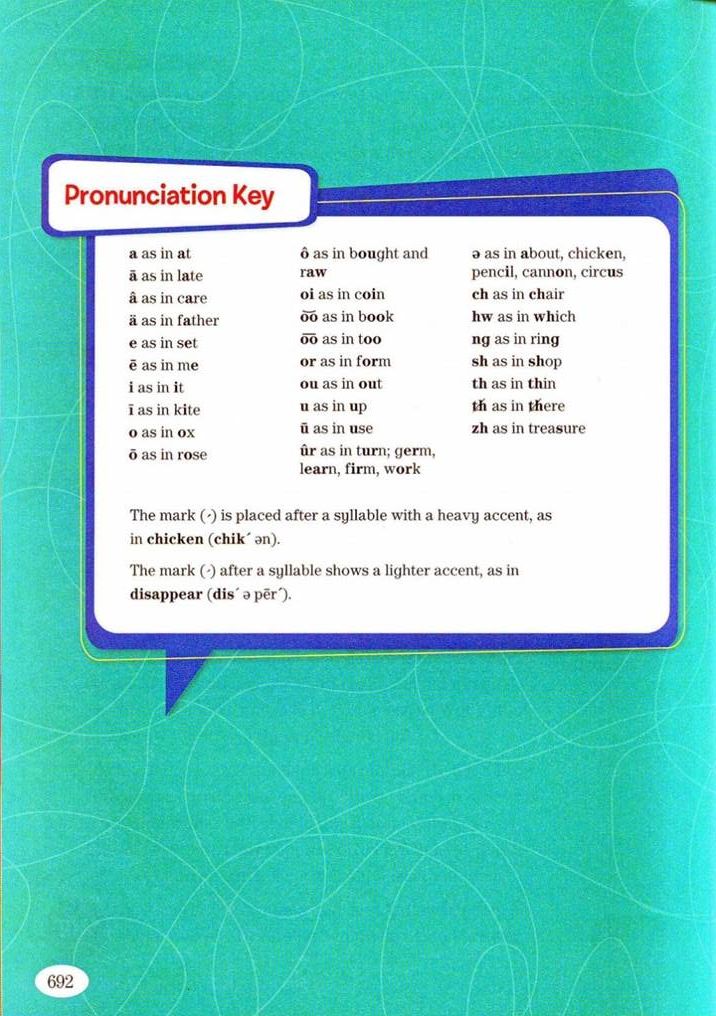
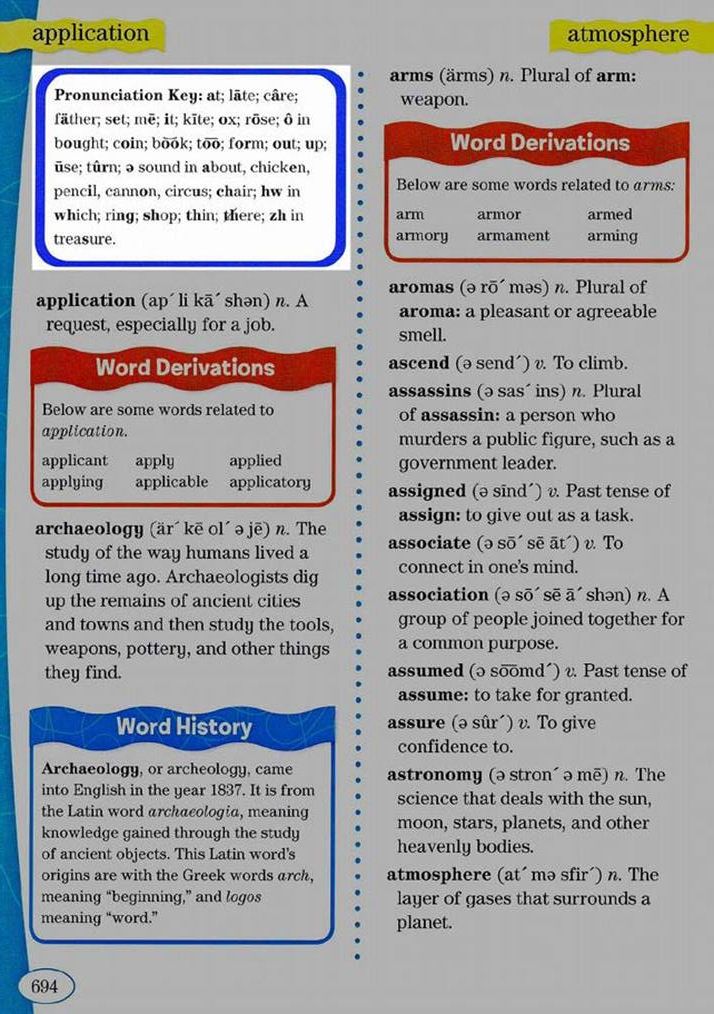
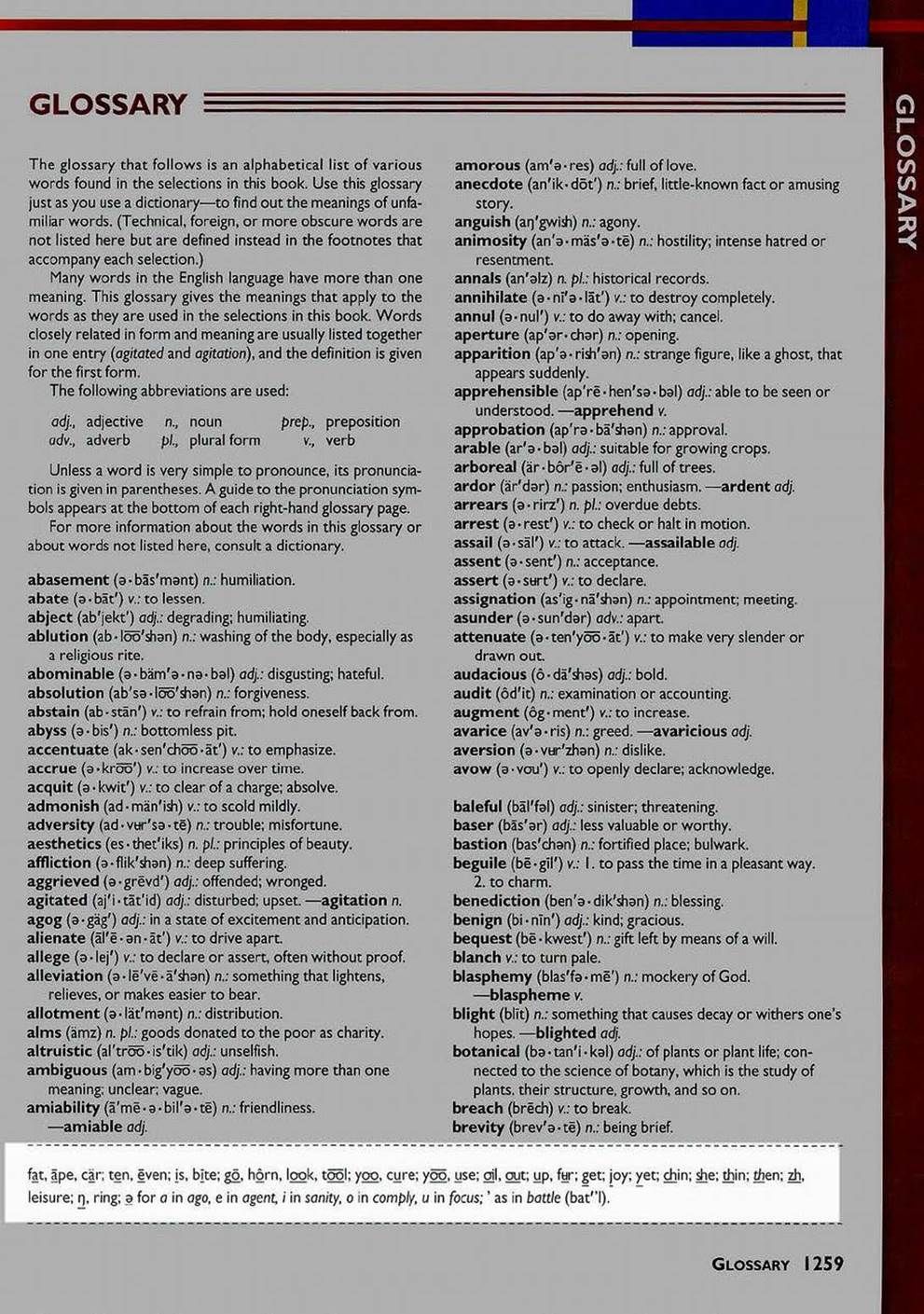
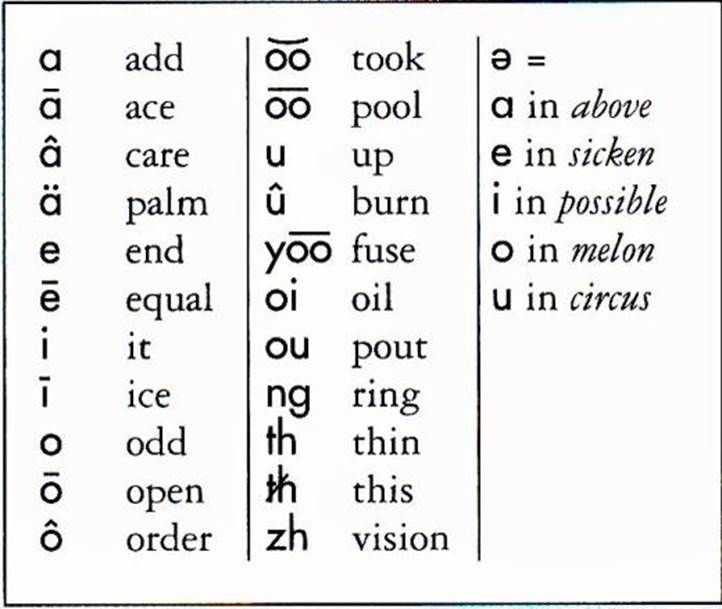
1⠀7777777777777777777777777777777777 #,-
2⠀a add
3⠀@-a ace
4⠀^%a c>e
5⠀^3a palm
6⠀;e 5d
7⠀@-e equal
8⠀i x
9⠀@-i ice
10 o odd
11 @-o op5
12 ^%o ord]
13 @+<oo> took
14 @-<oo> pool
15 ;u up
16 ^%u burn
17 y@-<oo> fuse
18 oi oil
19 ou p\t
20 ng r+
21 th ?9
22 @*<th> ?
23 zh vi.n
—New Braille Page—
1⠀.=_5 "7 a#,-2⠀⠀⠀a 9 .1abv
3⠀⠀⠀;e 9 .1sick5
4⠀⠀⠀i 9 .1possible
5⠀⠀⠀o 9 .1melon
6⠀⠀⠀;u 9 .1circus
7⠀gggggggggggggggggggggggggggggggggggggggg